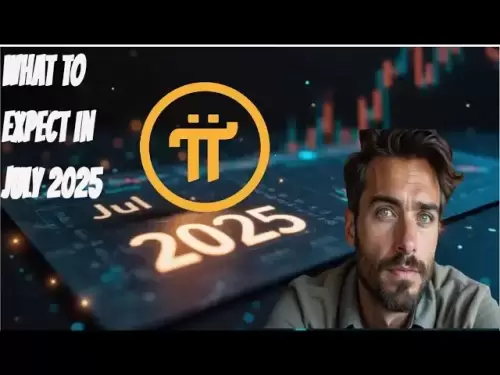-
 Bitcoin
Bitcoin $107,443.3008
-1.17% -
 Ethereum
Ethereum $2,494.2503
-0.63% -
 Tether USDt
Tether USDt $1.0003
0.00% -
 XRP
XRP $2.2496
2.23% -
 BNB
BNB $658.7569
0.63% -
 Solana
Solana $154.9826
1.94% -
 USDC
USDC $1.0000
0.01% -
 TRON
TRON $0.2799
1.07% -
 Dogecoin
Dogecoin $0.1659
-1.78% -
 Cardano
Cardano $0.5745
0.25% -
 Hyperliquid
Hyperliquid $39.7005
0.13% -
 Bitcoin Cash
Bitcoin Cash $519.5989
3.78% -
 Sui
Sui $2.7874
-2.40% -
 Chainlink
Chainlink $13.3762
-1.69% -
 UNUS SED LEO
UNUS SED LEO $9.0784
-0.64% -
 Avalanche
Avalanche $17.9846
-2.81% -
 Stellar
Stellar $0.2390
-0.06% -
 Toncoin
Toncoin $2.9028
0.25% -
 Shiba Inu
Shiba Inu $0.0...01147
-2.17% -
 Litecoin
Litecoin $86.6956
-1.27% -
 Hedera
Hedera $0.1508
-0.50% -
 Monero
Monero $322.6222
3.26% -
 Polkadot
Polkadot $3.4124
-2.99% -
 Dai
Dai $0.9999
0.00% -
 Bitget Token
Bitget Token $4.5434
-1.97% -
 Ethena USDe
Ethena USDe $1.0002
0.00% -
 Uniswap
Uniswap $7.1562
-2.61% -
 Aave
Aave $275.8830
-1.02% -
 Pepe
Pepe $0.0...09790
-4.04% -
 Pi
Pi $0.5018
-5.09%
How to control the risk of SOL contract trading? How to choose the leverage multiple?
Effective risk management in SOL contract trading involves using stop-loss orders, maintaining a favorable risk-reward ratio, diversifying your portfolio, and choosing appropriate leverage.
May 05, 2025 at 03:35 am
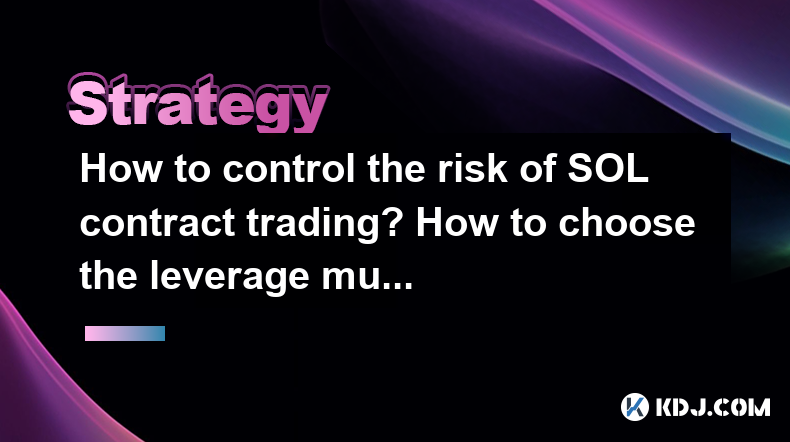
Trading Solana (SOL) contracts can be an exciting way to engage with the cryptocurrency market, but it comes with its own set of risks. Effective risk management is crucial to safeguard your investments and ensure a more stable trading experience. In this article, we will explore various strategies to control the risk associated with SOL contract trading and provide guidance on choosing the right leverage multiple.
Understanding SOL Contract Trading
SOL contract trading involves trading derivatives that derive their value from the underlying Solana cryptocurrency. These contracts allow traders to speculate on the price movements of SOL without owning the actual asset. This form of trading can offer significant profit potential, but it also amplifies risk due to leverage and market volatility.
To manage risk effectively, it's essential to have a clear understanding of the mechanics of SOL contract trading. Contracts can be futures, options, or perpetual swaps, each with different characteristics and risk profiles. Familiarizing yourself with these instruments and their associated risks is the first step towards effective risk management.
Setting Stop-Loss and Take-Profit Orders
One of the most fundamental risk management tools in trading is the use of stop-loss and take-profit orders. These orders help you automate the process of exiting a trade to either limit losses or lock in profits.
Stop-Loss Order: This order is set to sell your position if the price of SOL reaches a certain lower threshold. It helps you manage potential losses by exiting the trade before the price drops further. For example, if you buy SOL at $100 and set a stop-loss at $90, your position will be automatically sold if the price drops to $90, limiting your loss to $10 per SOL.
Take-Profit Order: Conversely, a take-profit order is set to sell your position if the price of SOL reaches a certain higher threshold. This helps you lock in profits without having to constantly monitor the market. For instance, if you buy SOL at $100 and set a take-profit at $120, your position will be automatically sold if the price reaches $120, securing a $20 profit per SOL.
Using these orders effectively requires careful consideration of market volatility and your risk tolerance. A too-tight stop-loss might result in being stopped out prematurely, while a too-loose stop-loss might not adequately protect against significant downturns.
Position Sizing and Risk-Reward Ratio
Position sizing is another critical aspect of risk management. It involves determining the amount of capital to allocate to each trade based on your overall trading capital and risk tolerance.
Risk-Reward Ratio: This ratio helps you evaluate the potential reward of a trade against its risk. A common strategy is to aim for a risk-reward ratio of at least 1:2, meaning for every dollar you risk, you aim to make at least two dollars in profit. For example, if you set a stop-loss at $90 and a take-profit at $120 on a $100 SOL purchase, your risk-reward ratio is 1:2.
Calculating Position Size: To calculate the position size, you need to determine the maximum percentage of your trading capital you are willing to risk on a single trade. If you're willing to risk 2% of your $10,000 trading capital, that's $200. With a $10 stop-loss, you can buy up to 20 SOL ($200 / $10 = 20 SOL).
By carefully sizing your positions and maintaining a favorable risk-reward ratio, you can better manage the risks associated with SOL contract trading.
Diversification and Portfolio Management
Diversification is a key strategy to reduce risk in your trading portfolio. By spreading your investments across different assets and trading instruments, you can mitigate the impact of a single asset's poor performance on your overall portfolio.
Trading Multiple Cryptocurrencies: In addition to SOL, consider trading other cryptocurrencies to diversify your exposure. This can help balance the risk if the SOL market experiences a downturn.
Balancing Long and Short Positions: Holding both long and short positions can also help manage risk. If the market moves against your long position, your short position might offset some of the losses.
Asset Allocation: Allocate your trading capital across different types of investments, such as spot trading, futures, and options, to further diversify your risk.
Effective portfolio management involves regularly reviewing and adjusting your positions to ensure they align with your risk tolerance and trading goals.
Choosing the Right Leverage Multiple
Leverage is a double-edged sword in trading. It can amplify your profits but also magnify your losses. Choosing the right leverage multiple is crucial for managing risk in SOL contract trading.
Understanding Leverage: Leverage allows you to control a larger position with a smaller amount of capital. For example, with 10x leverage, you can control a position worth $10,000 with just $1,000 of your own capital.
Assessing Risk Tolerance: Your choice of leverage should align with your risk tolerance. Higher leverage increases potential returns but also increases potential losses. If you're risk-averse, consider using lower leverage multiples.
Market Volatility: The volatility of the SOL market should also influence your leverage choice. During periods of high volatility, using lower leverage can help protect against rapid price swings.
Trading Experience: New traders might want to start with lower leverage until they gain more experience and confidence in their trading strategies.
Here are some steps to help you choose the right leverage multiple:
Evaluate Your Risk Tolerance: Determine how much risk you are comfortable taking. If you're cautious, start with lower leverage such as 2x or 5x.
Analyze Market Conditions: Check the current market conditions and historical volatility of SOL. Use lower leverage during volatile periods.
Start Small: Begin with a small position using lower leverage to test your strategy and gain experience.
Monitor and Adjust: Continuously monitor your trades and adjust your leverage based on performance and changing market conditions.
Frequently Asked Questions
Q: How can I monitor the effectiveness of my risk management strategies in SOL contract trading?
A: To monitor the effectiveness of your risk management strategies, keep a detailed trading journal. Record each trade, including entry and exit points, stop-loss and take-profit levels, and the outcomes. Analyze this data regularly to identify patterns and areas for improvement. Additionally, use trading platforms that offer real-time analytics and risk assessment tools to get immediate feedback on your strategies.
Q: What are some common mistakes to avoid in SOL contract trading?
A: Common mistakes include over-leveraging, neglecting to set stop-loss orders, ignoring market trends, and not diversifying your portfolio. Over-leveraging can lead to significant losses, while failing to set stop-losses can expose you to unlimited downside risk. Always stay informed about market trends and ensure your trading portfolio is well-diversified to mitigate risks.
Q: How can I improve my understanding of SOL contract trading mechanics?
A: To improve your understanding, engage in continuous learning through various resources. Read books and articles on cryptocurrency trading, participate in online forums and communities, and consider enrolling in trading courses. Additionally, using demo accounts on trading platforms can provide hands-on experience without risking real capital.
Q: Can I use automated trading bots to help manage risk in SOL contract trading?
A: Yes, automated trading bots can be a useful tool for managing risk. These bots can execute trades based on predefined criteria, including setting stop-loss and take-profit orders. However, it's important to thoroughly test and monitor any bot to ensure it aligns with your risk management strategy. Always start with a small amount of capital when using a new bot to understand its performance and reliability.
Disclaimer:info@kdj.com
The information provided is not trading advice. kdj.com does not assume any responsibility for any investments made based on the information provided in this article. Cryptocurrencies are highly volatile and it is highly recommended that you invest with caution after thorough research!
If you believe that the content used on this website infringes your copyright, please contact us immediately (info@kdj.com) and we will delete it promptly.
- BTCBULL: Riding Bitcoin's Bull Run to Crypto Glory
- 2025-07-01 20:30:11
- Bitcoin's July Jolt: Will We See a New ATH?
- 2025-07-01 20:30:11
- Bitcoin Cash Price Surges to 8-Month High: Is $1,700 Next?
- 2025-07-01 20:35:12
- Solana, Pepe Coin, Crypto Meme Mania: What's Hot and What's Not?
- 2025-07-01 19:10:12
- Bitcoin Cash Price Pump: Unpacking the Reasons Behind the Surge
- 2025-07-01 18:30:12
- Dogecoin's Wild Ride: Rally Potential Amidst Investor Panic?
- 2025-07-01 19:10:12
Related knowledge
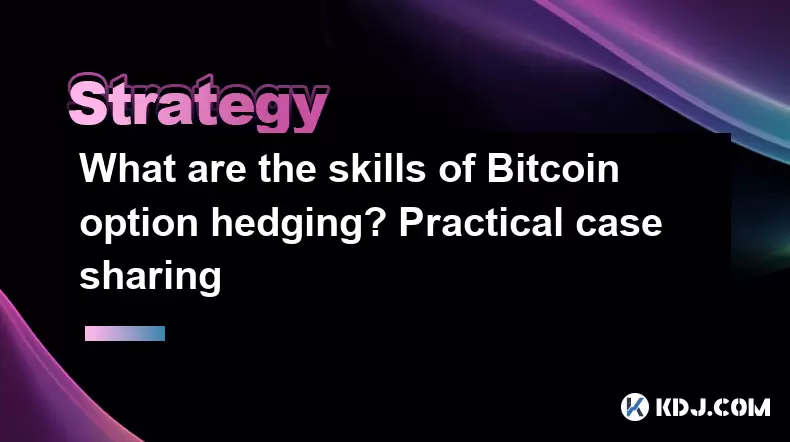
What are the skills of Bitcoin option hedging? Practical case sharing
Jun 24,2025 at 04:01pm
Understanding Bitcoin Option HedgingBitcoin option hedging is a risk management strategy used by traders and investors to protect their positions in the volatile cryptocurrency market. By using options, individuals can limit potential losses while retaining the opportunity for profit. In essence, it allows one to insulate against adverse price movements...
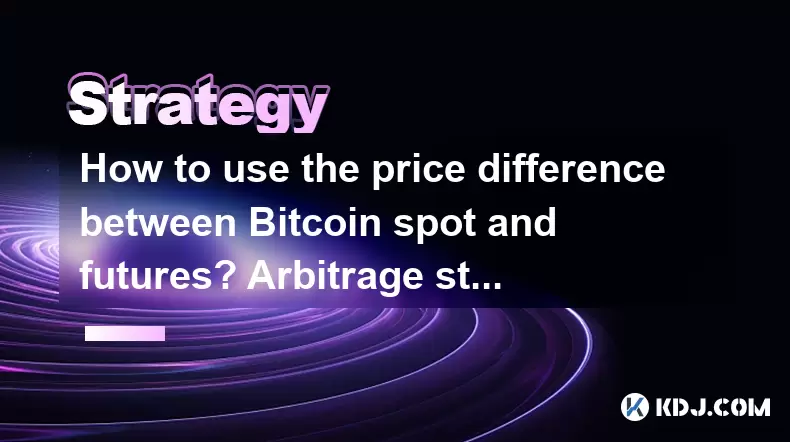
How to use the price difference between Bitcoin spot and futures? Arbitrage strategy
Jun 20,2025 at 02:56pm
Understanding Bitcoin Spot and Futures MarketsTo effectively leverage arbitrage opportunities between Bitcoin spot and futures markets, it's essential to understand the fundamental differences between these two types of markets. The spot market refers to the direct buying and selling of Bitcoin for immediate delivery at the current market price. In cont...
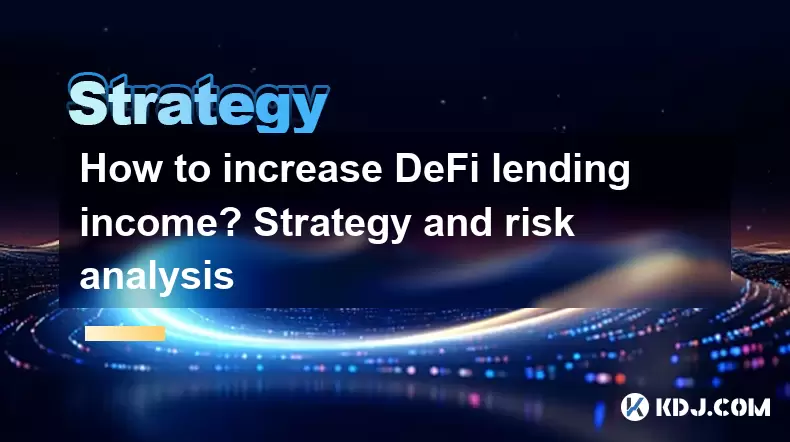
How to increase DeFi lending income? Strategy and risk analysis
Jun 24,2025 at 02:08pm
Understanding DeFi Lending and Its Income PotentialDeFi (Decentralized Finance) lending has emerged as a popular way to earn passive income in the cryptocurrency space. Unlike traditional banking systems, DeFi lending platforms allow users to lend their crypto assets directly to borrowers without intermediaries. The lenders earn interest based on the su...
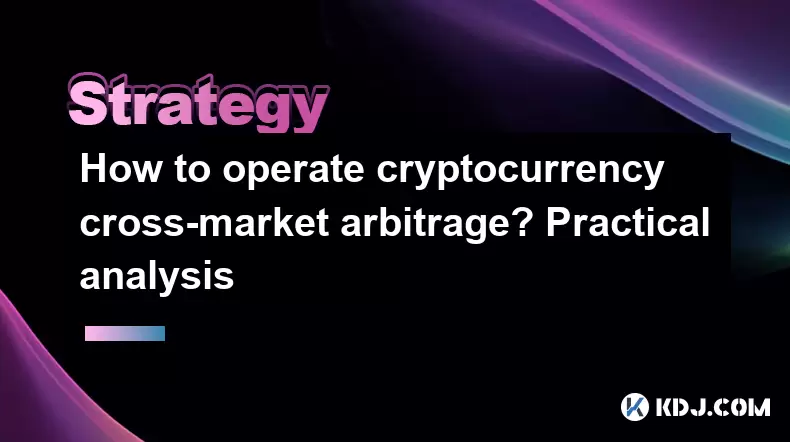
How to operate cryptocurrency cross-market arbitrage? Practical analysis
Jun 23,2025 at 04:01am
Understanding Cryptocurrency Cross-Market ArbitrageCryptocurrency cross-market arbitrage involves taking advantage of price differences for the same digital asset across different exchanges. The core idea is to buy low on one exchange and sell high on another, capturing the profit from the discrepancy. This strategy relies heavily on real-time market da...

How to make profits from high-frequency cryptocurrency trading? Sharing core skills
Jun 19,2025 at 05:07pm
Understanding High-Frequency Cryptocurrency TradingHigh-frequency trading (HFT) in the cryptocurrency market involves executing a large number of trades at extremely fast speeds, often within milliseconds. This method relies on small price discrepancies across exchanges or within a single exchange’s order book. Traders use complex algorithms and ultra-l...
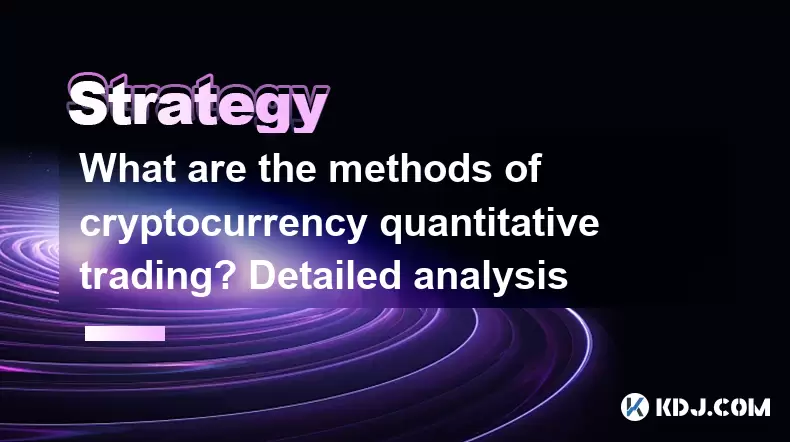
What are the methods of cryptocurrency quantitative trading? Detailed analysis
Jun 22,2025 at 11:07pm
Understanding the Core of Cryptocurrency Quantitative TradingCryptocurrency quantitative trading refers to the use of mathematical models and algorithms to execute trades in the digital asset market. Unlike traditional discretionary trading, which relies heavily on human judgment, quantitative trading leverages data-driven strategies to identify profita...

What are the skills of Bitcoin option hedging? Practical case sharing
Jun 24,2025 at 04:01pm
Understanding Bitcoin Option HedgingBitcoin option hedging is a risk management strategy used by traders and investors to protect their positions in the volatile cryptocurrency market. By using options, individuals can limit potential losses while retaining the opportunity for profit. In essence, it allows one to insulate against adverse price movements...

How to use the price difference between Bitcoin spot and futures? Arbitrage strategy
Jun 20,2025 at 02:56pm
Understanding Bitcoin Spot and Futures MarketsTo effectively leverage arbitrage opportunities between Bitcoin spot and futures markets, it's essential to understand the fundamental differences between these two types of markets. The spot market refers to the direct buying and selling of Bitcoin for immediate delivery at the current market price. In cont...

How to increase DeFi lending income? Strategy and risk analysis
Jun 24,2025 at 02:08pm
Understanding DeFi Lending and Its Income PotentialDeFi (Decentralized Finance) lending has emerged as a popular way to earn passive income in the cryptocurrency space. Unlike traditional banking systems, DeFi lending platforms allow users to lend their crypto assets directly to borrowers without intermediaries. The lenders earn interest based on the su...

How to operate cryptocurrency cross-market arbitrage? Practical analysis
Jun 23,2025 at 04:01am
Understanding Cryptocurrency Cross-Market ArbitrageCryptocurrency cross-market arbitrage involves taking advantage of price differences for the same digital asset across different exchanges. The core idea is to buy low on one exchange and sell high on another, capturing the profit from the discrepancy. This strategy relies heavily on real-time market da...

How to make profits from high-frequency cryptocurrency trading? Sharing core skills
Jun 19,2025 at 05:07pm
Understanding High-Frequency Cryptocurrency TradingHigh-frequency trading (HFT) in the cryptocurrency market involves executing a large number of trades at extremely fast speeds, often within milliseconds. This method relies on small price discrepancies across exchanges or within a single exchange’s order book. Traders use complex algorithms and ultra-l...

What are the methods of cryptocurrency quantitative trading? Detailed analysis
Jun 22,2025 at 11:07pm
Understanding the Core of Cryptocurrency Quantitative TradingCryptocurrency quantitative trading refers to the use of mathematical models and algorithms to execute trades in the digital asset market. Unlike traditional discretionary trading, which relies heavily on human judgment, quantitative trading leverages data-driven strategies to identify profita...
See all articles





















